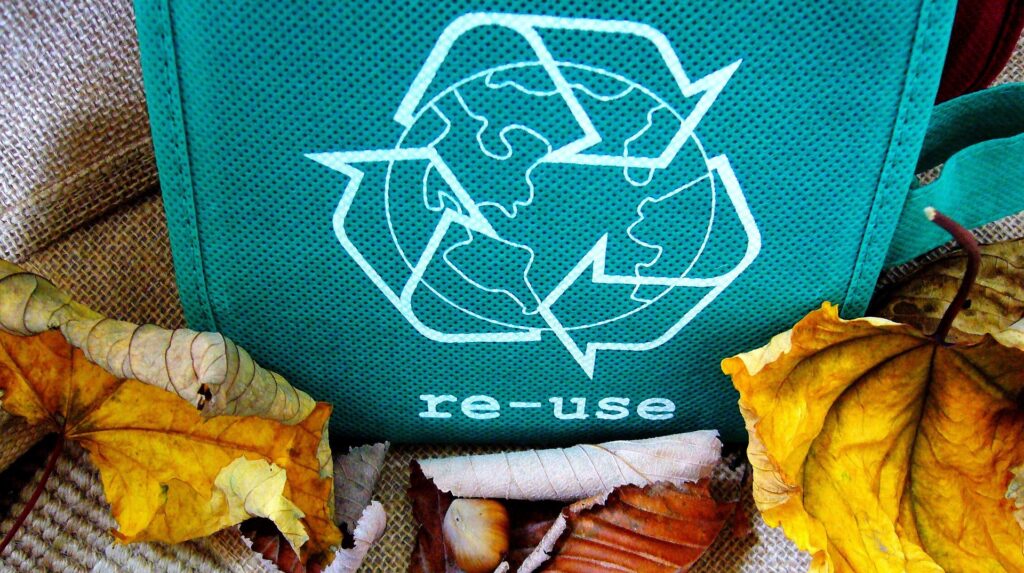
Around 12.8 tons of textiles end up in American landfills each year, according to the U.S Environmental Protection Agency. Spread out across the population, that works out to around 80 pounds per person, per year. To turn this shocking statistic around, we need to “close the loop” on textiles by turning our focus to a model of recycling. Here is our four-step guide to textile recycling for a cleaner planet that can sustain us all.
1. Reduce
In the 1970s, the environmental movement coined the slogan “Reduce, reuse, recycle” to encourage a more conscious approach to consumption. The first of the Rs is reduce because honestly, we don’t really need a lot of the goods that catch our eye!
For textiles and clothing, there are several ways to reduce consumption and lighten your wardrobe’s environmental footprint:
- Plan your wardrobe rather than buying on impulse.
- Buy high-quality clothes that last.
- Go for timeless classics rather than one-season styles.
- Find some new hobbies (aside from shopping) to share with your friends — nature walks and volunteering are great!
2. Reuse
Once you have a well-planned, quality wardrobe, you should be able to make it last for years. For example, a solid pair of cotton jeans should last for at least two or three years of regular wear. Imagine how many tons of textiles could be saved if we reused the same pieces instead of purchasing more!
A strong, minimalist summer skirt can easily be reused for fall with leggings and boots and styled for winter with a nice pair of jeans. Some reversible designs are now coming out that give you two looks in one — a creative approach to reusing your clothes that doesn’t sacrifice variety.
3. Repair
For the more minimalist and conservative among us, the main challenge comes when a beloved piece becomes damaged, stained, torn, or hole-poked, and no longer has its original shine. In these situations, learning how to repair your clothes can give new life to a piece that might otherwise have been thrown in the trash.
A later addition to the original 3 Rs, repairing can significantly extend the life of our clothes — giving us several more years of enjoyment or making the piece usable by somebody else. Learn a few of these simple techniques to address the most common issues:
- Take up and let down hems.
- Mend holes and gaps in seams.
- Apply appliqué and iron-on designs.
- Use embroidery techniques to cover a hole.
- Dye and tie-dye irreversibly stained clothes.
4. Recycle
Eventually, there comes a time when you need to pass a garment on. It may be that it no longer suits (or fits) you or has become so threadbare that it’s no longer warm. In both of these cases, there are options for recycling your clothes that don’t involve throwing them away.
Clothes that Are Still in Good Condition
The first rule for giving away a piece of clothing is to ask yourself, “Would you give it to a friend?” If a garment is still nice and not stretched or discolored, here are some options for sharing the love:
- Take it to a homeless shelter or other charity that could put it to good use.
- Bring it to a clothing swap.
- Offer it online through Freecycle or Marketplace.
- Donate it to Goodwill or the Salvation Army.
Clothes that Are Stretched or Worn Out
Old clothes that are no longer nice to wear can be recycled in a variety of ways. While you’ll probably want to keep underwear for rags (seriously, no one else wants your briefs!), worn-out socks, tops, pants, and shorts can be used as raw material for yarn or used as a filling for insulation, furniture, and more.
The top organizations in the United States that take textiles for recycling include:
- American Textile Recycling Service
- Threadcycle
- Soles4Souls
- Several fashion brands, including H&M, Levi’s, Patagonia, and The North Face
While many of these programs take lightly used clothes as well as old ones, we recommend recycling newer clothes closer to home through clothes swaps, thrift stores, or reselling near-new clothes online, as leftover donations are usually exported to third-world economies where they compete with local textiles for sales.
Ultimately, buying used clothes near you is the most powerful way to close the loop and ensure that recycled clothes get recycled! And when you do buy new (those briefs, for example), make responsible, earth- and socially-friendly choices that you can be sure will enhance your wardrobe for years.
